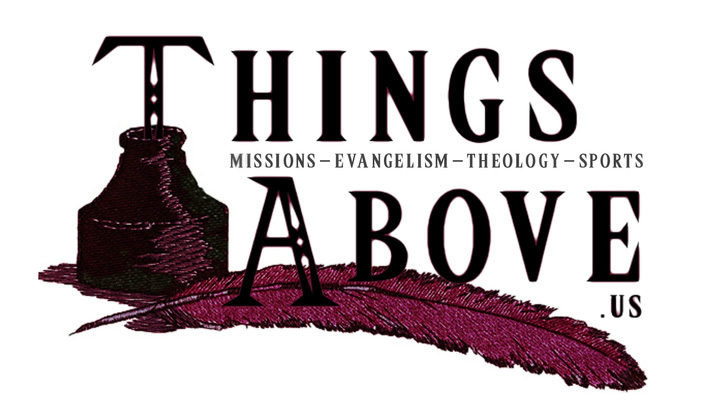
God’s Mediators: A Biblical Theology of Priesthood
by Andrew S. Malone. 230 pgs.
(Publisher: InterVaristy Press)
OVERVIEW
Why did God give His people priests? In what sense is Christ a priest? Does the role of priest continue today?
In this book, Andrew Malone unpacks the Bible’s teaching on priesthood by looking at both the Old Testament office of priest and Christ’s role as the great high priest of the New Testament. This book will help believers better understand what the Bible teaches about the role of priests throughout redemptive history.
Summary
God’s Mediators is the 43rd volume in editor D.A. Carson’s well-known New Studies in Biblical Theology (NSBT) series. Spend any time around theology geeks and their libraries and you will probably spot at least a few of the NSBT series with the plain looking gray covers. The covers might be plain, but the contents are incredibly valuable.
About the Author
Andrew S. Malone serves as Lecturer in Biblical Studies and Dean of the Online program at Ridley College. His previous works include Knowing Jesus in the Old Testament? and various essays and journal articles. He spent his formative years as a Baptist and later formally joined and served in the Anglican church (1). This makes for an unusual background which he admits had an influence on his views of priesthood.
REVIEW
Malone begins with a discussion of biblical theology itself (4-5). He describes biblical theology as a multi-colored tapestry, which I found it to be a really helpful analogy. He explains the categories of continuity and discontinuity argues for “degrees of continuity” while recognizing that the term might make some readers nervous (6).
Professional Priests
Part I of this book covers what could be called “professional priests” (13-121). We get a look at the origins of the Aaronic priesthood. Malone contrasts the speed of our modern entertainment with Israel’s slow, “stationary” situation which lasted all the way from Exodus 18:5 until Numbers 10:11 (13-14). In summarizing what the Bible has to say about the Aaronic priesthood, the author rightly points out the Old Testament’s concern for the exclusivity of who could and could not safely approach the God (45). We tend to forget that God is holy and we are not. If we don’t get this, we won’t fully appreciate the role that Christ fulfills as great high priest.
The section on Christ as a priest after the order of Melchizedek deserves special attention and should interest anyone who holds to Reformed theology (108-115). Malone goes so far as to title the section “Jesus as (high) priest in Hebrews!” He defends the exclamation point with a few opening quotes from scholars like Geerhardus Vos. I think Malone is right to argue that the theme of Jesus as high priest is central to a proper understanding of the Letter to the Hebrews. When Malone ends this section, it is almost like he can’t help himself from breaking out into praise to God for “the magnitude of the access to God that Jesus has secured” (116). If all of this doesn’t bring us to praise God, then we have missed the point.
Corporate Priests
In Part II, the author looks at the concept of all Israelites serving in a corporate, national priesthood (125-178). Malone covers Israel as a kingdom of priests and both individual and corporate priesthoods (125-146). He then returns to the New Testament to examine priesthood in 1 Peter, Hebrews, Paul’s Letters, and other passages (147-178). The final chapter ends with reflections on biblical insights, possible contributions, and missional contributions related to the Bible’s teaching on priesthood (179-190).
The book’s shift in Part II to national Israel as a corporate body of priests helps to balance the idea of priests as only professional elites. After all, didn’t some Puritans talk describe every believing husband and father as a “priest in his home,” and don’t many Protestants today talk about “The Priesthood of the Believer” and so on? The author touches on the idea that the Aaronic priesthood relates to corporate Israel, while Jesus relates to “corporate Christians” (125).
This could imply a “two peoples of God” theology, which pits national Israel against the Christian church. Thankfully, Malone relieves the tension by pointing out the Prophet Isaiah’s “inclusive tone” in describing God’s intention to gather a people to himself from every tribe, tongue, and nation (142). In other words, the purpose of the earthly Aaronic priesthood was to prepare the way for Christ as the ultimate great high priest (146).
Conclusion
God’s Mediators is a book that achieves the author’s goal of accurately describing the Bible’s own theology of priesthood. Malone freely admits that he did not cover every possible area of what the Bible teaches about priesthood. He humbly points out that there is more work to be done on this vital topic. This book will prove to be an important contribution to the study of priesthood and I highly recommend it to the serious student of theology.
A copy of this book was provided by the publisher in exchange for an honest review.






Thank you Pastor. There is not much material on this. It really validated my journey. I pray my mom can…